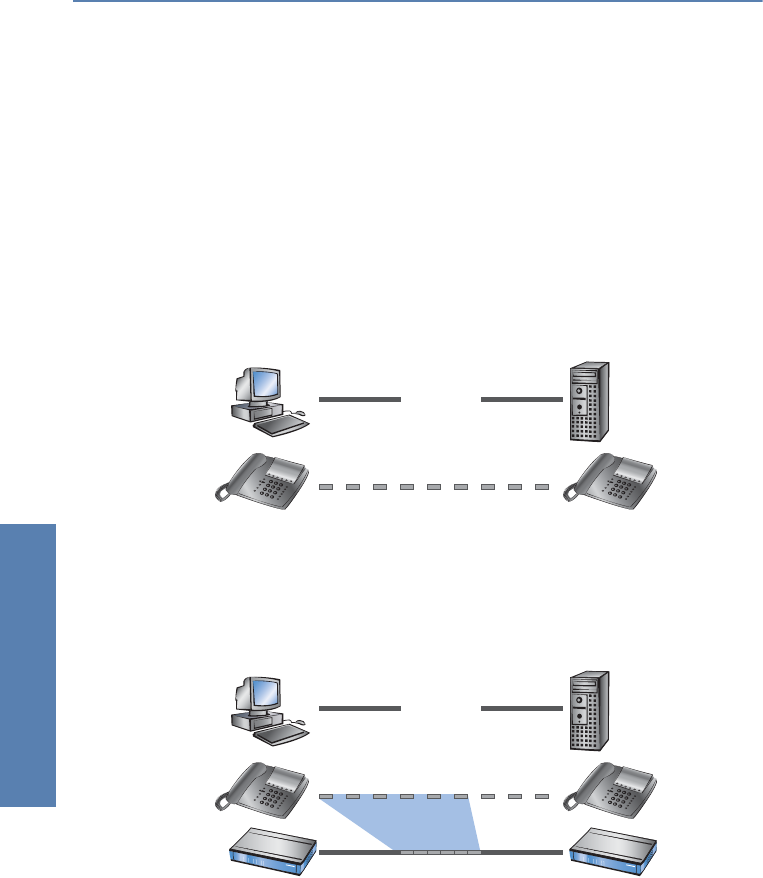
LANCOM Reference Manual LCOS 3.50 ̈ Chapter 9: Quality of Service
176
Quality of Service
̈ Standard reception queue
All packets that do not need special treatment because of an active QoS
rule on the receiving side end up here. Packets of this queue are directly
passed on resp. confirmed without consideration of maximum band-
widths.
9.4 Reducing the packet length
The preferential treatment of data packets belonging to important applica-
tions can be endangered - depending on the situation - by very long data
packets of other applications. This is the case e.g. when IP telephony and a
FTP data transfer are simultaneously active on the WAN connection.
The FTP transfer uses quite large data packets of 1500 byte, whereas, the
Voice over IP connection sends packets of e.g. 24 byte net in relatively short
intervals. If FTP packets are in the sending queue of the LANCOM just at the
moment when a VoIP packet is to be transferred, then the VoIP packet can
only be sent after the line is free again. Depending on the transfer rate of the
connection, this may cause a noticeable delay of the speech transmission.
This annoying behaviour can be compensated if all data packets, which are
not belonging to the connection preferred by QoS, do not exceed a certain
packet length. While doing so, the data packets of the FTP connection will be
divided into such small sections that the time-critical VoIP connection is able
to deliver the packets without noticeable delay within the required time slots.


















